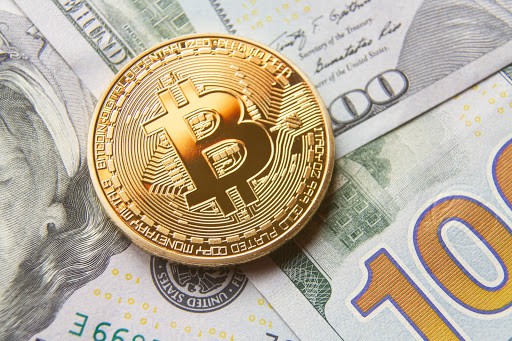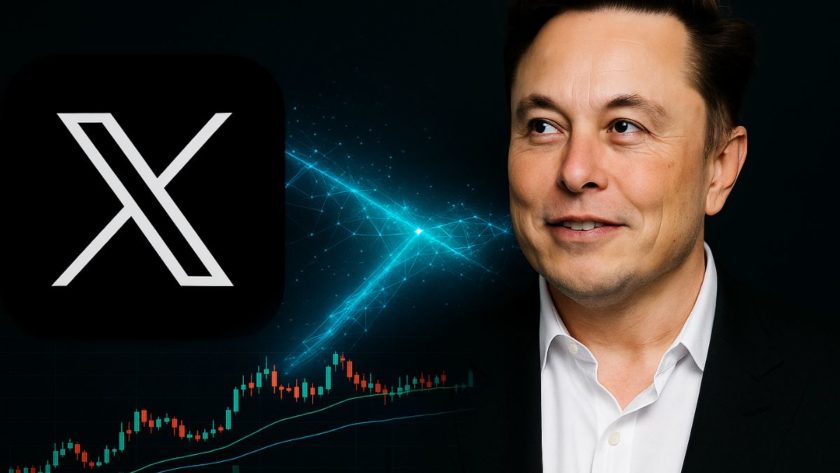As you enjoy these waning days of 2020, Forkast.News would like to take you back to the top stories we covered over the past 12 months — the biggest stories and hottest trends that dominated our headlines — and count them down for you.
Happy holidays to one and all, from our Forkast.News family to yours.
1. DeFi goes wild
According to DeFi Pulse data, US$675.59 million was locked into DeFi on Jan. 1, 2020. As the year winds down, this number has now exploded to over $16 billion as of this writing.
- After the coronavirus crash of March, Chinese DeFi protocol dForce, which was criticized for cloning codes of other platforms, was hacked for US$25 million in crypto, just to have it returned.
- DeFi gained a boost from the yield farming craze. Yield farming, or liquidity mining allows users to lock up crypto in liquidity pools to earn rewards. Andre Cronje’s Yearn.finance became one of the most popular protocols for yield farmers, and a YFI token reached an all-time-high of US$43,874 this year, according to CoinMarketCap metrics.
- Uniswap, a decentralized exchange has also contributed to DeFi’s rise this year. When the UNI governance token was launched, Uniswap accounted for almost 25% of the total value locked in DeFi.
- The rise of DeFi and increasing use of stablecoins created a clog in the Ethereum network, which saw gas prices rise to astronomical levels. Ethereum 2, has since launched on Dec 1.
- As the year started, Maker has regained its throne in DeFi’s TVL ranking, recording 18.25% dominance in DeFi. Some industry insiders have told Forkast.News that DeFi is currently in its “bubble” state.
What this means:
Decentralized Finance is supposed to offer alternatives to all aspects of the financial process, from insurance to savings and credit. So far, the most popular verticals have been savings and credit because the market is hungry for liquidity and the two are closely related within the finance supply chain. Lenders looking for a return can deposit their crypto or stablecoins into a high-yield savings account, which in turn lends out crypto to traders, or purchases portfolios of DeFi tokens. Or, traders with more risk tolerance can purchase the tokens themselves and commit liquidity to the pool — in turn with more liquidity comes more dividends in the form of tokens. Think if Visa or Amex gave fractions of their respective shares to customers, prorated based on how much you spend.
On one hand, a lot can be said how this form of liquidity is only possible because of Etherum’s programmability. Granted, yes, programmabile money is an important part of this as the ability to borrow, lend, trade automatically via smart contracts is key for this all to work. But in reality demand for DeFi is organic, and from the bottom. In an era where big bold bets on equities create high, double-digit returns and savings accounts from banks pay under 1% returns, there’s an incredible demand for something in the middle. Hence, the growth in DeFi-backed savings accounts. But the actual yield farming that acts as one of the underlying assets behind these accounts? It’s a game for whales — showing that occasionally blockchain and crypto don’t democratize existing financial power structures but rather just reinforce existing ones.
2. The global CBDC race heats up

As it has been since the start of 2020, China is still leading the global central bank-backed digital currency (CBDC) race. This year, the project has progressed to testing the DCEP digital yuan in various cities, including its largest experiment to date, in Suzhou. While Covid-19 has accelerated the shift to digital payments, the United States has lagged behind China in developments of its digital dollar.
- Nations such as the European Union, Australia, Canada, South Korea, Hong Kong, and others have announced partnerships with prominent blockchain companies such as Tezos to lead CBDC developments.
- Among these companies, ConsenSys has been the go-to partner for central banks, when it comes to CBDCs.
- While Venezuela has its own iteration of a CBDC called petro, Bahamas became the first official country to fully deploy a central bank digital currency.
- Facebook’s Libra, once touted as a potential currency for Facebook’s 2.5 billion-plus users, has been scaled back significantly and was recently rebranded as Diem. Many prominent financial services such as Visa have signed out of the Libra Association to launch their own crypto-related services.
Why this matters:
Central bank digital currencies have been an exciting story to cover this year. We have two entities — unlikely bedfellows — to thank for the accelerated interest in stablecoins: Facebook and the People’s Bank of China.
When Facebook announced Diem, the stablecoin formerly known as Libra, it was impressive how universally despised it was by central bankers as well as lawmakers around the world. This collective was concerned that Facebook’s supranational user base of 2.7 billion — more people than the world’s largest country — could disrupt the global pecking order of country, currency and power. Libra version one was a stablecoin based on a basket of currencies led by the U.S. dollar. The concern from the world was that ubiquitous adoption would drive up demand for U.S. dollars, cementing its global hegemony. At the same time, the U.S. Federal Reserve believed that increased demand for the greenback would wrestle control away from its hands given the bulge in demand Libra would create.
China, for its part, was concerned by Libra’s rise — former Bank of China President Li Lihui said in a June interview that Facebook’s de-escalation of Libra as a supranational currency meant that the DCEP digital RMB’s development could slow down — but it’s more pressing concern is building the RMB’s liquidity. Despite China being the world’s second largest economy, the RMB is relatively illiquid ranking below the Canadian dollar and Swiss franc.
So for China, with its global trading ambitions, why be stuck using the USD as a means of settling transactions? Or really, why should any country when there’s not a direct nexus to the U.S.? Hence the great CBDC race.
3. Bitcoin’s all-time highs and growing respectability

Bitcoin started off the year at just over US$7,200, according to CoinMarketCap data. This has since more than tripled since and broke new records, surpassing the world’s biggest bank JPMorgan & Chase in market capitalization.
- Although bitcoin was not immune to the coronavirus market crash of March 18, some investors argued that this was a characteristic of a mature investment.
- Since the crash, bitcoin has gone through its third halving event, and now has a mining reward of 6.25 BTC. The next halving event is expected to occur in 2024, and will reduce the mining reward to 3.125 BTC per block.
- Following the halving event, bitcoin started attracting institutional investors and high-net worth family offices that were looking to hedge their portfolios against potential inflation, after banks continued to extend coronavirus relief packages for the struggling economy.
- In the most recent bull run, institutional investors such as Square, Microstrategy and MassMutual have invested in bitcoin.
- Bitcoin is also being introduced to the retail customers as global financial services such as Visa and PayPal announced bitcoin-related services on their platforms, including Visa’s bitcoin rewards program.
What might be next:
To say things are “uncertain” with the global economy is a bit of an understatement. The world’s biggest economies are propelled by stimulus, with debt hitting unprecedented levels. Although the stock market has effectively recovered since March, the U.S. dollar is showing its war wounds, down 11% on-year as currency traders are concerned with the country’s deficit. Oil and energy prices are weak as people stay home, and agricultural prices are flat given the compressed demand from the restaurant sector.
So what are investors going to do? Hunt for an alternative asset class. Bitcoin has already blown past it’s all-time 2017 high, last reached at the height of the ICO craze, and is now on its way to US$25,000. US$30,000 may be around the corner.
A remarkable part of bitcoin’s ascent into the category of institutional asset class is just how quickly American regulators have moved to allow it (Hong Kong paved the way at the end of 2019). The U.S. Office of the Comptroller of the Currency, one of the more important offices in the U.S. for regulating banks, is run by a former Coinbase executive and gave a green light for U.S. banks to act as crypto custodians. The CFTC is drafting comprehensive regulation of crypto as a commodity, and SEC commissioner Hester Pierce frequently dissents against rulings and judgements that are viewed as restricting the industry. In short: the regulatory environment is in place for this asset to be on the balance sheet of major institutional investors. And it is, with MassMutal, one of America’s largest insurers, making a US$100 million bet on bitcoin. This is the shape of things to come in 2021. Be prepared for more of it.
4. Covid-19 accelerating blockchain solutions for health
The coronavirus outbreak broke the world this year, shifting society to a new normal of working, learning, shopping, socializing and communicating in a purely digital environment. Bitcoin and the cryptocurrency market at large were not immune to what is now increasingly referred to as the Coronavirus Crash.
- The rapidly spreading deadly virus also brought to the fore the need and challenges of reporting timely and accurate medical data, and accelerated the development of blockchain and distributed ledger technology (DLT) solutions. For example, Acoer — an Atlanta-based DLT-enabled applications developer — employed Hedera Hashgraph to create a coronavirus-tracking application.
How it happened:
Although bitcoin and crypto were dramatically affected by the March 2020 asset crash, as no commodity proved immune, the crypto labor force proved to be much more resilient. This is an industry that is work-from-home native, and spread across geography.
But as the pandemic wore on, new ways of demonstrating blockchain’s utility became apparent. A greater emphasis on tracking supply chains became the norm, and the eventual need for a way to securely transmit information about one’s vaccine or Covid test status means that enterprise-grade blockchain and digital ledger technology will continue to be in the limelight in 2021.
Winston Churchill once told the United Nations to “never let a good crisis go to waste.”
The blockchain and crypto community have taken the Covid pandemic in stride, using it as an opportunity for growth. When 2021 begins, enterprise blockchain technology will be as mature as ever and bitcoin considered an institutional grade asset. Covid-19 has certainly been the core theme in the acceleration and adoption of this technology.
5. China’s big ambitions: new digital yuan and national blockchain network

Covid-19 may have disrupted much of daily life in 2020, but for China’s blockchain ambitions, this has been a productive year with important milestones achieved. Its new DCEP digital currency, a project that started six years ago, is now circulating in many places in a series of ever-widening tests on the mainland. China also launched the BSN, a national blockchain-based service network.
- The digital yuan made its first public appearance in April 2020 through leaked photos and videos of e-RMB wallets from the Agricultural Bank of China.
- The DCEP digital yuan was introduced to four large state-owned banks in internal testing, followed by a recent large-scale test with 50,000 citizen-users in Shenzhen. The digital yuan is now being tested by 100,000 more residents in Suzhou, where additional functions of the digital currency — such as offline payment and touchless payment — are being introduced for the first time. If all goes well with the latest round of testing, it shouldn’t come as anyone’s surprise if China launches the world’s first major and fully formed CBDC in 2021 (despite recent clarification by a former bank governor that technically, it’s just a digital currency issued privately by banks and redeemable for RMB — similar to Hong Kong’s bank note system — and therefore not the central bank-issued digital money as envisioned by many proponents of CBDCs).
- Also in April, China launched a national blockchain service for commercial use. At first, the BSN was expected to be a way to globalize Chinese blockchain tech by including public chains into its network.
- In July, BSN did include public chains like Tezos, NEO, Nervos, EOS, IRISnet and Ethereum, but China soon split the network into two entities — BSN International and BSN China, similar to Bytedance’s video platforms Tik Tok and Douyin, which have different ecosystems and target different audiences. Time will tell whether the BSN will be able to attract more international users in 2021.
What’s really going on:
China’s digital ledger and blockchain ambitions for 2020 have come in two varieties: the DCEP digital yuan and BSN. To be sure, these are two very different things and are technically unrelated; the DCEP payment network doesn’t exist as a layer on BSN (in fact, DCEP uses digital ledger technology, which is similar to blockchain but not the same thing). But they do have a similar objective — internationalizing China’s sphere of influence in finance, payments and technology (fintech).
One of China’s plans for DCEP digital yuan is to be a nexus of payment settlement for any transaction involving the mainland. No more having to rely on U.S. dollars as the method of payment. Given China’s important position as the world’s factory, there’s an obvious pathway to build a user base, particularly within the trading blocs it leads. Liquidity is key, and that’s something in its current shape and form the RMB just doesn’t have. The emergence of Facebook’s Libra (recently renamed Diem) allegedly expedited China’s digital currency development, but also kicked off a CBDC arms race around the world.
Similarly, there could come a day where blockchain is a required technology to transmit and clear time sensitive data like shipping manifests or supply chain reports. Again, China — the hub of the world’s manufacturing industry — can dictate that BSN is used as the blockchain layer to transport this data. That being said, BSN’s launch thus far hasn’t been perfect. The original plan of being a blockchain network that links China to the world comes with a huge caveat that this won’t work with the majority of western blockchain technology. China’s rules around cryptography require the use of homegrown encryption technology, which is a non-starter for western blockchain tech. Thus, BSN had to fork into two versions: a China-chain and a global chain. But without that link to China, the whole project is much less useful and interesting. In 2021 BSN will be around, but its utility and influence on the global blockchain stage will be muted unless there’s a way to bring the network back to its original mandate and mission.




